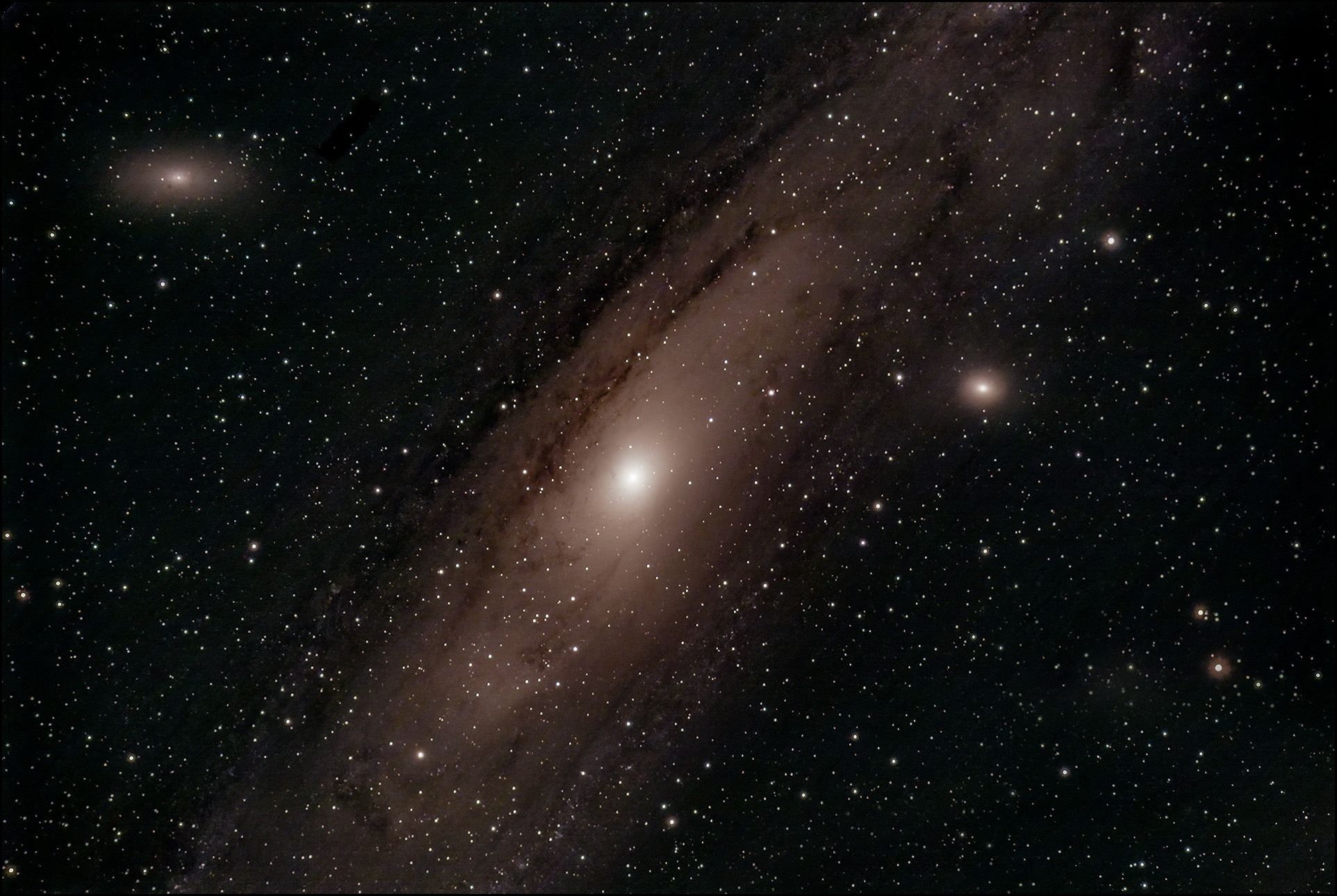This is phase two of my Andromeda Galaxy imaging. My previous attempt used 10-second exposures because that was the best I could do. Now, with autoguiding working properly, I was able to do a set of 180-second exposures on Sunday night. I let the camera run for about two hours, which gave me 40 frames to feed into the stacker software. I've posted both the old image and the new one so you can see the difference.
Light pollution is measured on the Bortle scale. I live in a Bortle 9 area, which is about as bad as it gets short of downtown Tokyo. Both of the images below were taken in Trabuco Canyon, a Bortle 7 region about a half hour away. If the weather cooperates, then later this week I'll take a trip out to my favorite Bortle 2 area in the desert. In addition to a few other improvements, I plan to let the camera run for four or five hours, which will give me something like a hundred images to feed into the software. That will be my phase three image. It won't be the best possible image, but it will probably be the best feasible image until I gain a lot more expertise in the details of pre- and post-processing.



Very impressive! Your images should get even clearer, as our galaxy and Andromeda approach and ultimately "collide."
A fellow I work with told me he had read that the Milky Way will collide with the Andromeda Galaxy. I thought he had said it would be in about 5 million years, which was scary, but when I looked it up it turned out to be 5 billion years, which isn’t so worrying.
@Ken Rhodes
Dodged a bullet there.
Galaxies are mostly empty space, so an intergalactic collision should be no big deal. The stellar densities near the core are quite high compared to out on one of the arms where we reside, which brings to mind a question. Could societies on planets near the galactic core achieve interstellar travel because of the relatively short distance (a fraction of a light year) between stars?
That's a relief. I will sleep better now.
Wow!
Okay. You’ve convinced me
So sick! I can't even get Saturn to show up good enough to see rings. 🙁
I'm beyond jealous!!!
It's really not hard *if* you have equipment up to the task. I just started imaging Jupiter and Saturn at 1600mm focal length and can at least make out some banding in clouds and Saturn's rings. Kevin's deep-sky stuff emphasizes other things (long exposures, autoguiding); the winning technique for planets is shooting video at over 100 FPS and then using software like AutoStakkert or Registax that can pull out the best frames.
Where’s Scoop?
What I did for lunch was stand at the counter and eat a bowl of Corn Flakes while staring into the cupboard.
I can never quite get the point of spending lots of time and money trying to photograph things when countless professional images of them are freely available on the internet. It must be something to do with cat v dog people.
FAKE STARS AND GALAXYI!!!!!
It's a good photo but the colors seem way off. The spiral arms are rich in bright blue stars which I don't see at all here. This is more like you would expect an ancient elliptical galaxy to look.
Outstanding. Really pretty.
Impressive....
Though I'm still amazed at what Galileo was able to discern with his telescope
Very nice, Kevin! If you get 4 hours of integration time in Bortle 2 with this level of acquisition and processing, the results are going to be amazeballs.
I do quibble with your choice of orientation. It's in the Bible somewhere that "Thou shalt image Andromeda with M110 on the bottom or be cast into eternal hellfire." Leviticus, I think.
It's sort of like relief inversion in an aerial photograph, the tones in M31 create the illusion of a nice bowl shape for M31 when M32 is uppermost and M110 below. Of course it's not "real", it's not as if the galaxy is showing shadows as it's externally lit from above. But for me it's more aesthetically pleasing.